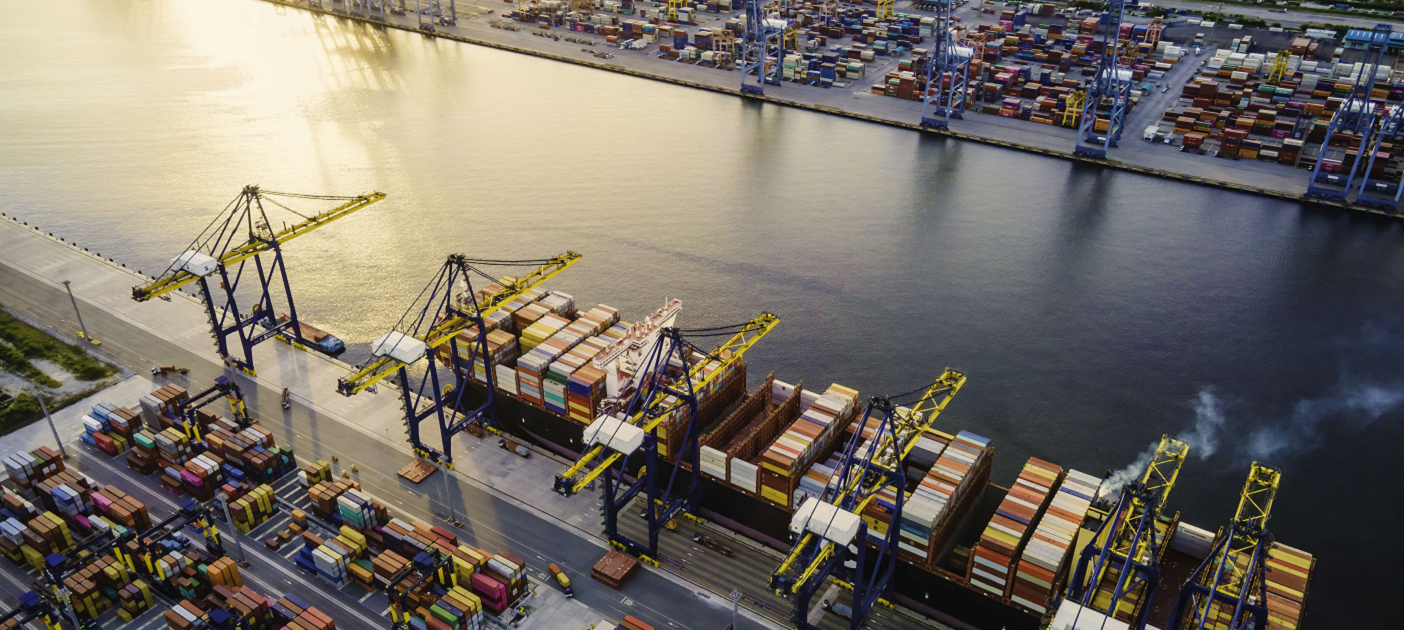Asian economies face further tariff whiplash
"A high-tariff environment will challenge export-oriented Asian economies and manufacturing businesses based here. Asian businesses must prepare for future scenarios by mapping risks, finding new markets and reassessing capital investment plans." – Eric Xu, Executive Director, Metals and Mining and Head of FDI Desk at DBS.
As expected, President Donald Trump’s latest round of tariffs on April 2—also dubbed as “Liberation Day”—hit several Asian economies hardest, resulting in uncertainty and predictability for the region’s businesses and policymakers.
In the latest tariff announcement, the US has imposed a baseline tariff of 10% on all its trading partners, with substantially higher tariffs on imports from some economies, deemed as “worst offenders” by the White House.
China continues to face the brunt of the punitive action from the US, with tariffs first being hiked from 10% to 20%, and now another 34% being slapped in the fresh round, over and above the existing tariffs, bringing the total import tariffs on Chinese goods to a whopping 54%.
Other Asian economies such as Vietnam, Laos, Cambodia and Myanmar have also been hit with tariffs of 45% or more in the blink of an eye.
Immediate implications
The latest round of reciprocal tariffs has already resulted in significant volatility and unpredictability in Asian economies and capital markets. Businesses in the region—across sectors—now suddenly have to deal with their exports to the US becoming much more expensive.
The latest action by the US also throws into the air alternative trade and supply chain strategies that were earlier talked about, including China+1, nearshoring and reshoring. Moreover, it jeopardises the near-term capital investment plans of businesses in the region (as elsewhere).
The announcement lays to rest the idea of shifting production out of China (both by Chinese companies and multinational corporations) to nearby manufacturing centres—the most prominent of which was Vietnam—to circumvent the impacts of the US-China trade war. That is a thing of the past, at least for now.
Even before this round of tariffs, manufacturing activity was already slowing in key Asian economies such as Japan, South Korea and Taiwan owing to ambiguity around US trade policy. Several Asian countries run hefty trade surpluses with the US, with China at the top, and Vietnam and Taiwan in third and sixth positions, and they have been targeted as a result.
Figure 1: Many Asian economies runs large trade surpluses with the US
Table 1: New round of tariffs announced on “Liberation Day”
| Asian economies | US reciprocal tariffs (announced on April 2, 2025) |
|---|---|
| Cambodia | 49% |
| Laos | 48% |
| Vietnam | 46% |
| Myanmar | 45% |
| Thailand | 37% |
| China | 34% |
| Indonesia | 32% |
| Taiwan | 32% |
| India | 27% |
| South Korea | 26% |
| Brunei | 24% |
| Japan | 24% |
| Malaysia | 24% |
| Philippines | 18% |
Source: Channel News Asia
Longer-term implications
While there will, no doubt, be some wrangling and negotiations over concessions from the US, the bigger picture is somewhat clear—that we are now formally and officially witnessing a fundamental reshaping of the global trading system.
This latest round brings the US’ average import tariffs to Word War I levels, or the highest in more than a hundred years. It is likely to result in a prolonged global economic slowdown if there is no backtracking.
The global trading system has been ripped open, and it is increasingly likely we will see other major economies in the world either retaliate with tariffs on imports from the US, or look to forge closer economic ties with another, or both. Global trade now lies in flux as countermeasures are deliberated on and developed around the world.
The surge in tariffs will result in slower economic growth both in the US and globally. According to Oxford Economics, US imports could fall by as much as 15% over the next two to three years due to the tariff hikes, resulting in global GDP reducing by up to 0.5% in 2025 and as much as 1% next year.
Sectoral impacts
Even before the Liberation Day tariffs were announced, President Trump had issued blanket tariffs on automobiles, and steel and aluminium imports entering the US, and those remain unchanged.
Among Asian economies, a tariff hike of 25% on all automobiles and parts entering the US market, which came into effect on April 3, will particularly impact Japan and South Korea, which both hold nearly a 20% share each of the US passenger car import market. South Korean passenger car exports to the US make up nearly 2% of its nominal GDP, for example.
Figure 2: Top exporters of passenger cars to the US
The consequences of these tariffs will not just be limited to auto manufacturers; they will also impact US consumers through significantly higher prices. However, that doesn’t seem to be a concern for President Trump yet, as illustrated in an interview with NBC News, in which he said he “couldn’t care less” if automakers hike prices, “because if the prices on foreign cars go up, they’re going to buy American cars”.
Separately, Trump also issued two proclamations in February, imposing 25% tariffs on steel and aluminium imports. These, too, remain unchanged and will significantly impact the US economy as these are key materials needed for the infrastructure, automotive and aerospace sectors.
Semiconductors and pharmaceuticals are sectors that were expected to see tariff increases on April 2, but didn’t. However, they may attract separate tariffs in the future. If implemented, Asian economies such as Malaysia, Taiwan, Vietnam and South Korea will be hit particularly hard, as they account for about 60% of all US semiconductor imports. The impact will be acute for Malaysia, whose semiconductor exports to the US made up nearly 4% of its nominal GDP in 2024.
Figure 3: Semiconductor exports to the US by Asian economies as a share of nominal GDP (2024)
How businesses can respond
This isn’t an easy time for Asian manufacturing businesses. Responding to this degree of trade volatility is challenging and scuppers profitability in the short term, as well as growth and investment strategies over the medium to long-term.
There is a possibility that some tariffs are lowered if the US makes concessions for some of its trading partners, and given this possibility, businesses could adopt a wait-and-see approach. It will likely be a few months before the dust finally settles and there is greater policy certainty as we enter a new normal.
That said, Asian businesses must start preparing for future scenarios in case this high-tariff environment is here to stay. This includes a reassessment of investment plans and the search for new markets first and foremost. It also requires a mapping of risks and a deeper understanding of supply chains, which are more complex now than ever before.
DBS’ Foreign Direct Investment (FDI) team can help your business navigate the web of tariff complexity and advise on long-term strategic approaches and investment decisions to help build greater resilience. Tariffs aside, there are additional complexities that are becoming more prominent, such as inward and outward investment controls, and import and export restrictions, further impacting businesses. With our global presence across 19 markets and industry-specific expertise across 14 sectors, DBS is well-equipped to support your business as we venture into unchartered territory.
For more information on the services and solution DBS’ FDI team can provide, click here.


